A few weeks ago I mentioned some issues I encountered ordering my first mag mount antenna. I was unclear as to what was connecting to what and, because I really am an ADD squirrel on crack, I did not give my full attention to the connectors involved. So when I retrieved my Amazon package from the front porch and went to hook it all together, I discovered I ordered the wrong antenna. (Thank God for Prime!)
One week later, I hooked the NEW new antenna to the mag mount, hooked the adapter to the coax and HT and I was in business.
Well sort of. I didn’t discover critical mistake number two until a few months later when I realized I couldn’t hit the 440 band. I forgot to check Standing Wave Ratio on the antenna after I installed it. (Seriously, who knew?)
As you might have guessed, I have no background in electronics. My dad was an Electrical Engineer, but apparently you don’t pick that stuff up through osmosis.
But it seemed to me like there were as many different connector types involved in ham radio as there are stars in the sky. (Cue Carl Sagan Ethereal Voice) "Billions and billions."
God Bless my Elmer, KB0DBJ, for putting up with me, because I get tenacious when I don’t understand things -- and I definitely did not understand connectors. I asked lots of questions and did my own research as I set out to understand how all the pieces and parts fit together.
As it turns out, there’s really only a few basic connector types for each application type. There are different connector types for HT antennas, larger radios, and mag mount connectors.
Just to make it all more fun, all of these connectors are interconnected. Meaning, the two ends of coax may require different connectors depending on what it’s connecting.
Wow. The previous paragraph had four different versions of the word “connect”, so I’m thinking we need to talk connectors.
Connectors are used to connect pieces of equipment. They are hard-mounted onto the backs of larger radios, built-in to HT radios and antennas and soldered onto the ends of coax. When referring to them in speech, they are gender specific. Male connectors have a rotating sleeve, or barrel, and a center pin. Females have an inner socket, or jack, and exposed threads.
A connector’s lifespan is based on the number of connects and disconnects that can be made before a failure occurs. Obviously, RF connectors should not change the impedance of the coax or hardline or allow in external signals. This becomes even more important as radio frequency increases.
~SPECIFICS~
Connectors for bigger radios, coax and antennas
“UHF Connectors” – Also known as SO239(F)/PL259(M) connectors. The SO239(F) connector is usually the RF connector on most major radios. Dual band antennas for VHF/UHF usually come with SO239 connectors, as well. This means if you’re going to connect an antenna to a radio and both components have an SO239(F), you will need a piece of coax with PL259(M) on either end. The shortfalls of this particular connector are uneven impedance and lossiness over 450Mhz.
“N Connectors” – are the new and improved version of the UHF (SO239/PL259) connector. There are two versions of this connector, one male and one female, but both are referred to as an N Connector. The equipment/antenna will have a female connector, coax to connect the two will require the male connectors on either end. Due to extra gaskets, they are weather resistant, but should not be considered water proof. Additionally, they are low loss at UHF and microwave frequencies and have a more "even impedance" than their SO239/PL259 counterpart.
Connectors for HTs and rubber ducks
HT antenna connectors are a little different than mobile and HF radios, but there are basically three types of HT connectors. Radios built before 2000 tend to have BNC connectors. Newer radios will have SMA connectors. American models have the female on the radio, the male on the antenna. Chinese models have the male on the radio and the female on the antenna. For this reason, the Chinese SMA is sometimes referred to as a “reverse SMA”. Take care when ordering a new antenna for your HT. Depending on the age or country of origin, you could need a BNC, SMA or reverse SMA.
Mobile Mag Mount Connectors
Most mag mount bases for antennas come with a female NMO threaded base, however they can also come with an SO239 threaded base. The threaded base connects to your actual antenna. You must buy an antenna that matches the threaded base.
Remember I said that most larger radios have a SO239(F) connector hard mounted on the back of the radio? As pure coincidence I’m sure, the coax attached to the mag mount base usually has the mated PL259(M) connector. Great for mobile rigs. Not so great for HT’s. If you look back at the previous section, NONE of the HT rubber ducks have SO239 connectors on them.
Enter the adapter. Since connectors are usually soldered on, hams have come up with easy fixes for mismatches to avoid cutting and resoldering new connectors. Jumper adapters are one example. Jumpers are short runs of coax with different connectors on either end to accommodate mismatches. You can also buy an adapter connector, where the actual connector has different ends. For example, one side is PL259(m) and the other side is NMO(f). You can even buy right-angle connectors to fit in tight spaces.
Connectors can get confusing, but if you’re unsure… Do what I did after I had to return my order. Draw it out. I’m a visual person, I need to see it. Even if it’s just a rough sketch, it will help your wrap your mind around it.
Trust me, there is nothing more frustrating than having to return something and wait on something else when you’re ready to use your new toy.
~73
KG5BHY
Allison
